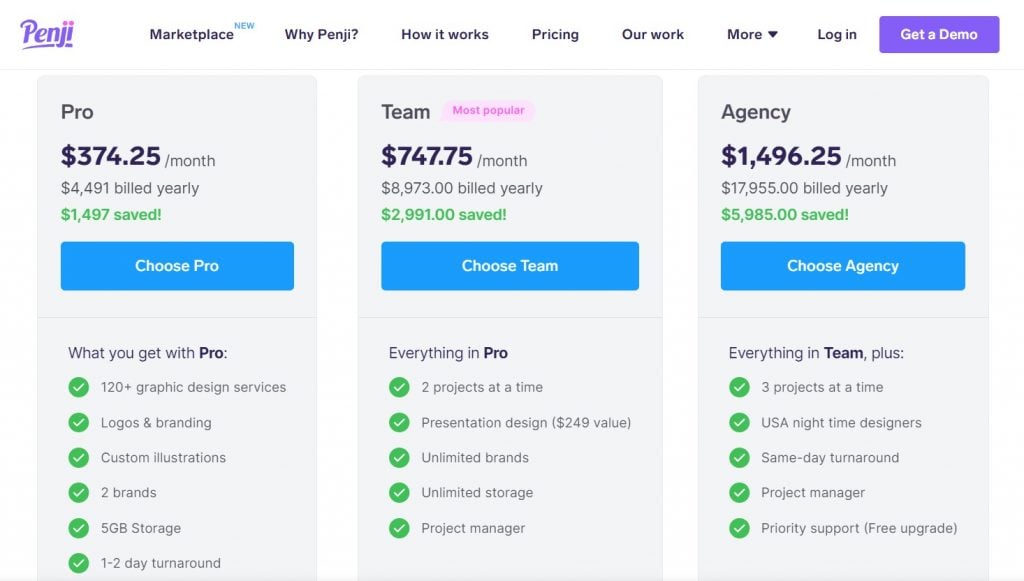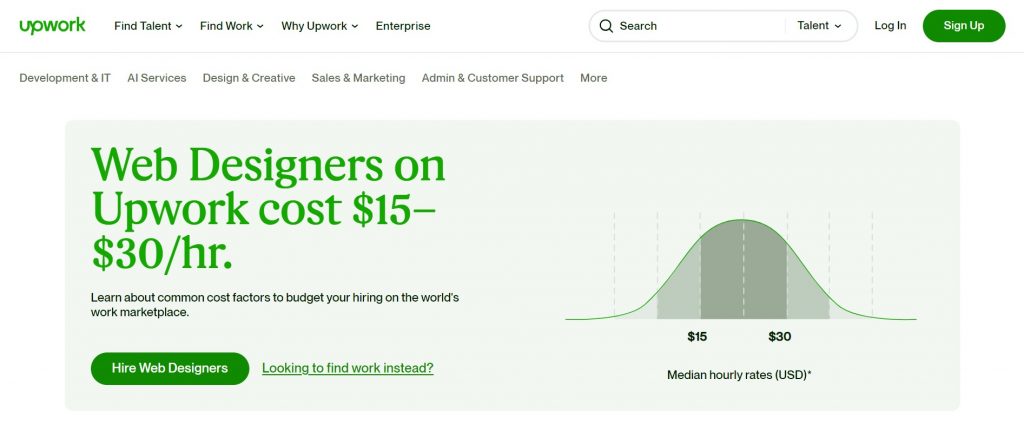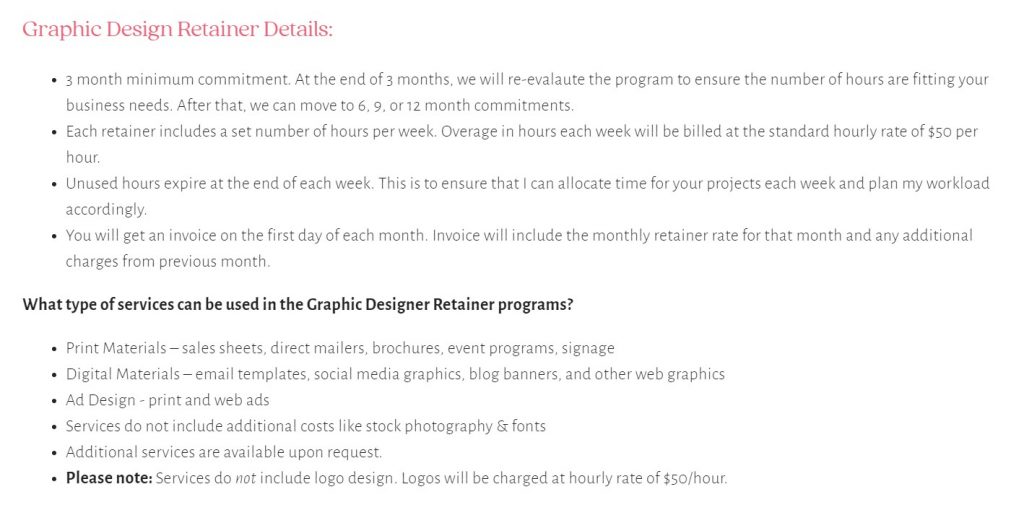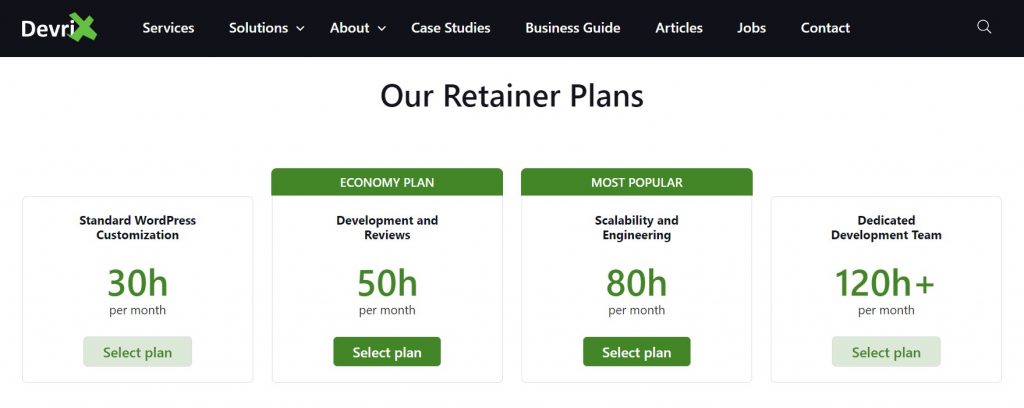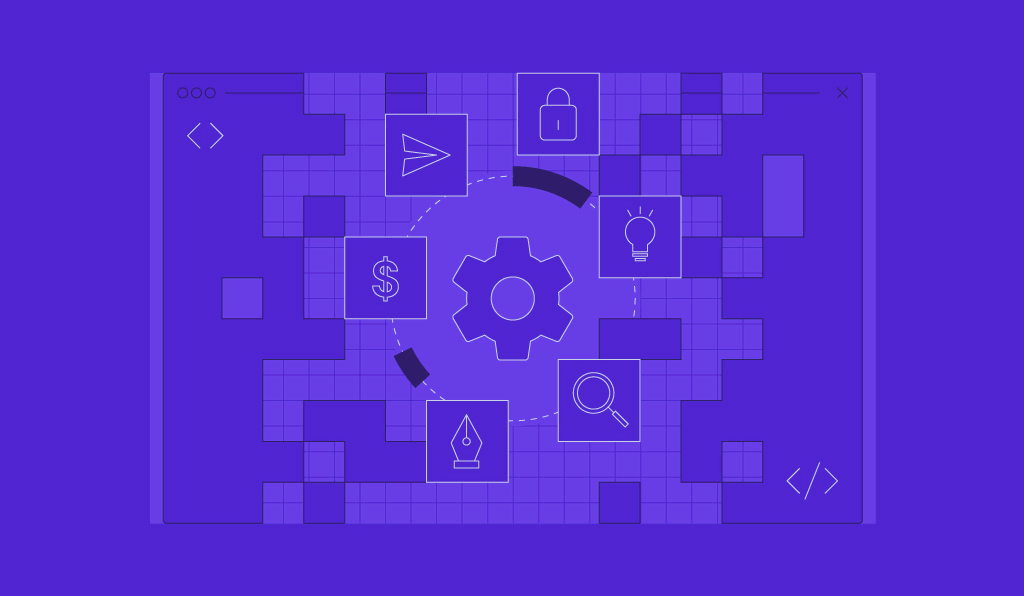How to Set Up Monthly Retainers + Tips for Creating a Successful Retainer Agreement
Freelancing or working as a contractor offers tons of perks, like flexibility and autonomy. However, it can be challenging to build a steady stream of income. That’s why setting up monthly retainer contracts is a great way to combat the issue.
Retainer fees are an excellent alternative to an hourly rate or project-based pricing, as your monthly retainer fee will ensure a more stable income. Fortunately, it’s relatively straightforward to set up a retainer contract as long as you implement the right strategy.
In this article, we’ll take a closer look at how retainer agreements work. We’ll also discuss services that work well for retainer agreements and explain how to set up a recurring payment system for any ongoing work or long-term project.

What Is a Monthly Retainer?
A monthly retainer is an agreement for long-term projects ensuring steady collaboration between a client and a contractor for extended tasks. It assures the contractor of regular monthly earnings and offers the client a reliable team for the project’s duration.
How Do Monthly Retainers Work
A monthly retainer occurs when a client pays an advance payment to access your current and future services for a specified period of time. It’s similar to working on a contractual basis, with the payment covering the number of hours you work for the client each month.
For example, if you’re a website developer, you may work with the same clients on an ongoing basis. Therefore, it can make sense to set up monthly retainers. This way, the client knows that your services will remain available to them throughout the month while you can enjoy the perks of a recurring revenue stream.
As such, monthly retainer contracts are a great way to earn guaranteed income. Plus, it makes your business more efficient since you don’t need to spend hours searching for new potential clients each month.
Instead, you can learn how to build up your expertise in the industry, ensure each client’s business needs are addressed, and better serve existing clients by establishing a stronger working relationship.
What’s more, retainer contracts have plenty of benefits for the client. For example, the fee is often lower than an hourly bill or fixed payment. The retainer concept can also help to establish greater trust and efficiency in long-term client relationships.
What Services Work Well for Monthly Retainer Agreements?
Monthly retainers can work well within many industries. However, it’s a popular pricing model for agencies and freelancers.
Suggested Reading
Leveling up your business? Head to our guide on how to successfully move from freelancer to agency:
How to Move From Freelancer to Agency: Signs You’re Ready to Grow + Tips to Succeed
Here are some services that might benefit from implementing retainer fees:
- Website development. If you work as a freelance developer, you can set up monthly retainers to perform ongoing maintenance work, run updates, and offer technical support.
- Website design. Although you may be hired for a one-time project, some businesses prefer to keep a designer on hand to make minor changes and enhancements.
- Digital marketing. As a freelance marketer, you might run email campaigns or social media strategies that need to be regularly reviewed and updated.
- Search engine optimization (SEO). If you specialize in SEO, you can analyze monthly reports and search engine rankings to recommend changes based on the data.
- Content creation. Creating content is an ongoing process. Therefore, you might set up a retainer contract that includes a certain number of blog posts, social media posts, or landing pages.
Of course, there are tons of other fields that can benefit from retainer contracts, such as consulting services. As long as you can offer your services on an ongoing basis, then this type of agreement can work well for your business.
How to Set Up a Monthly Retainer
Now that you know the basics about monthly retainers, let’s take a look at how to properly set up an agreement for retainer work.
1. Determine the Scope of Work
In order to produce a fair monthly retainer agreement, it’s important to be as clear as possible from the beginning with any potential client. For this, outline the scope of work that you and your team will undertake.
This means describing the exact nature of the services that will be covered within the designated time frame. So, whether you’re a developer, web designer, or marketing consultant, you’ll need to include all the tasks that you’ll routinely conduct each month for the client.
Determining the scope of work is important because it ensures that the client understands exactly what they can expect. Therefore, it can eliminate requests for revisions beyond the contractual agreement, reducing the possibility of scope creep.
However, this also benefits the client. If something is missed or not completed as stipulated in the agreement, the client can refer back to the contract to prove this.
At this stage, it can also be useful to stipulate an additional fee for any services or tasks that fall outside the scope of work. This way, if the client does require extra services or more hours, you can make sure that the retainer fees reflect this change.
2. Agree on Deliverables
Next, you need to consider the structure of the agreement and decide how you’ll organize the services that you’re offering. Therefore, it’s important to agree on the project deliverables.
A popular way to structure monthly retainers is time-based. With this method, you will deliver the work within a specified time, like after a certain number of hours or on a weekly or monthly basis.
On the other hand, you might agree on deliverables that are product or service-based. So, instead of counting how many hours you work for the client, you’ll focus on a set amount of products or services to deliver.
For instance, if you work as an SEO analyst, you might set up a monthly retainer agreement that outlines three services that you’ll provide for a set fee. This might include keyword research, on-page optimization, and analytics.
To make it easier for clients, you can outline the deliverables in each service tier and cater them to the size and needs of your client’s business. The Penji website, which runs on Hostinger’s managed hosting, clearly lists deliverables as well as the benefits of its web design services.

Another approach is access-based, whereby a retainer fee is paid upfront by a client to access future services. The client is also charged hourly for the time it takes to complete the work. However, it is very rare to set up monthly retainers for access to services unless you work in the legal sector.
In each of these scenarios, it’s important to define what will happen if there is scope creep, where the work exceeds the agreement. For example, you might work more hours during the month of a campaign launch, or the client may require additional services that aren’t stipulated in the contract.
3. Calculate the Monthly Retainer Fee
Once you’ve outlined the scope of work and determined the deliverables, you’re ready to calculate your retainer fees. Of course, this will only be an estimation, but it gives you a good idea of where to start.
Calculate Your Expected Salary
Before you can work out your monthly retainer fee, consider how much you’d like to earn each year.
First, look at your current pricing model or how much you’ve charged for similar work in the past. If you’re setting up a new business, we also recommend researching some industry estimations.
You can do a quick scan of freelance websites for developers, designers, and marketing specialists to see what your competitors are charging. Popular platforms include Fiverr and Upwork. Make sure to also consider the size of their business and the variety of services compared to your own.
Once you’ve come up with a pricing range for retainer work, it’s time to think about your overheads. These are the costs you incur while conducting business, like electricity, rent, and insurance. Depending on the type of services you offer, this also includes the prices of software you need, so add these estimations to your fixed monthly expenses.
Then, you want to make sure that you can make a profit. Although it depends on the industry, 20% is considered a good profit margin. So, add that to your overheads and salary expectation to come up with the total figure you’ll need to charge as an annual fee.
Calculate Your Monthly Retainer Fee
Now that you’ve calculated how much you need to earn for the year, it’s time to work out your monthly retainer fee. To start, calculate how many hours you’ll work for one client. For example, you might need to spend two hours a day on a single client.
So, let’s say that you’ll work a standard eight-hour day for five days a week. Let’s also factor in that you might take two weeks off for vacation in the year.
In this instance, you’ll need to perform the following calculation: two hours a day × five days a week × 50 weeks per year = 500 hours to work for one client each year.
To calculate the monthly retainer fee, you can divide the annual figure that you calculated in the previous section by the number of hours you’ll work for the client, which is 500 in this example.
This might look something like: $120,000 divided by 500 hours = 240. So, in this case, your hourly rate will be $240.
Since you’ll only work two hours a day for each client, you can charge them a retainer fee of $2,400/month.
4. Decide on the Payment Terms
One of the most important parts of setting up a monthly retainer agreement is to clearly define the payment terms. While most retainer payments are made in advance, you’ll need to discuss the fee structure with your client.
For instance, a down payment is a popular option. In this case, the billing and invoicing may be due at the end of each month. However, you’ll ask the client for a deposit to be paid upfront before the work commences.
Since the client will make a monthly payment for your retainer fee, it’s important to choose a set date for it. Make sure to stipulate this in your retainer, regardless of whether you have a freelancer or agency contract.
Additionally, it’s important to outline any lump-sum payments that need to be made, if applicable. This might be the case if you need to purchase extra equipment or hire extra staff to complete the work.
After that, clarify with the client on how they will pay the retainer fee. For example, will they set up a standing order with their bank or pay by credit or debit card?
You should also differentiate the payment terms for your base retainer fee vs additional fees. This is necessary if you offer any extra services or add-ons that might not be included in the retainer contract.
5. Create a Communication Plan
While monthly retainers are a great way to stabilize your income, they also enable you to build a strong retainer relationship with each of your clients. As such, it’s crucial to maintain transparency during all client communications.
To do so, create a plan or customer report where you outline the work you’ve done, track how many hours you’ve billed, and log the progress made on the project. This way, the client can clearly see the value proposition you bring to their business.
Plus, it enables you to open up contract negotiations. For example, you might feel that you need more hours to complete the work that you’re hired to do. If this is the case, the monthly report can demonstrate this.
While a communication plan isn’t a legal necessity, it’s a great way to show the client that you appreciate their business and that you’re willing to go the extra mile. As such, it can also help you score renewals and potential clients based on positive testimonials from your current and past clients.
6. Determine the Contract Duration
Going into business with a new client is always a risk. You don’t know whether you’ll enjoy the work, whether you’ll develop a good working relationship, or how much the project will change over time. Although a good retainer agreement can alleviate these issues, it’s also important to determine an end date for it, even in long-term contracts.
The simplest way to do this is to discuss it prior to drafting the contract and onboarding the client. Then, you can include it in your monthly retainer agreement with a break clause, enabling both parties to give notice in case of early contract termination.
By determining an end date for your contract, you can give yourself an opportunity to renegotiate rates or expand the scope of work to boost your revenue. Plus, once you’ve been working with a client for a while, it becomes easier to demonstrate your value to the business.
If you find yourself in a position where you need to offboard a client, it’s crucial that you’re honest about the reasons for doing so. Plus, it’s best to leave on good terms, so make sure to give the client enough notice and deliver all the work set out in the agreement.
7. Specify Non-Disclosure and Confidentiality
Depending on the industry, working with clients on retainer may bring you into contact with classified information. Therefore, to protect yourself, the client, and the information shared between you, consider having a Non-Disclosure Agreement (NDA) or confidentiality agreement.
A confidentiality agreement enables you to protect certain information from the public, third parties, or competitors. This way, you and the client are unable to circulate or profit from any of the information that is shared during the time of the work agreement.
Meanwhile, an NDA is a specific type of confidentiality agreement. It is a legally binding contract that establishes a confidential relationship between you and the client. As such, it prohibits the unauthorized access or sharing of any sensitive information.
Monthly Retainer Success Tips
Now, let’s look at some tips to help you create a successful retainer agreement.
Make Plans for Unexpected Work or More Services
Include provisions in your monthly retainer agreement to better prepare for unexpected or future projects when working with a new client.
Think about the past projects you’ve completed. There were likely times when the client asked you to make a last-minute change or a seemingly minor tweak that increased the scope of work and your designated hours.
So, it’s important to clearly explain what will happen if the work takes longer or less time than expected. Will you roll over the hours to the following month? Or will you complete additional work in that time?
To ensure a productive retainer relationship that meets client expectations, highlight plans and added retainer fees for extra work or services before finalizing the retainer contract. Hello Ginger, for example, clearly states these provisions on its website.
If you think a client or project will require additional work, negotiate a custom plan that already includes minor or major revisions in the original price.
Provide Clients With Different Service Tiers
When selling retainers, service tiers enable you to cater to clients with different budgets and needs. As such, you can attract new clients, upsell existing ones, and increase your predictable revenue.
For example, if you’re a blog writer, you might offer three different service tiers that are differentiated by output. First-tier clients may pay a lower fee for one article each week. Second-tier clients may pay for two articles, and so on.
Alternatively, you can differentiate service tiers by product. For instance, first-tier clients may receive a set number of articles, while second or third-tier clients gain additional access to social media and optimization services.
There is also time-based pricing. WordPress development service provider, DevriX, presents its retainer plans based on the number of working hours on a monthly basis.
By providing different service tiers, you can cater to a wider range of prospects while clearly demonstrating the value of your work. So, clients that are paying for the top service tier can understand the added benefits and justify the price.
Send Monthly Reports to Your Clients
Monthly reports are an excellent way to make your services more valuable. By compiling a comprehensive report, you can include details about the work you’ve done and show the client the return on their investment.
We recommend covering the following components in your report:
- The hours you’ve worked
- A summary of the work completed
- An overview of the project and progress made
- A statement of any payments made during the month
This is an effective way to maintain excellent retainer relationships and boost the client’s confidence in your services.
Evaluate and Adjust the Monthly Retainer
While a monthly retainer sets the scope of work and payment terms, it shouldn’t be set in stone. In fact, it’s a good idea to regularly review the agreement and make any necessary adjustments.
For instance, you may feel as though you need to increase the number of hours you work for the client each month. Alternatively, you might need to increase your rates due to economic changes or to reflect your growing expertise and experience.
In this instance, you can submit a retainer proposal highlighting any changes that you think should be made. Additionally, it can be useful to schedule a sit-down meeting at the end of each quarter where you can receive feedback from the client and share your own findings.
Suggested Reading
Read our comprehensive guides to help you successfully sell services to clients:
Web Design
How to Price Web Design Services: Setting Competitive Prices for Web Design Projects
How to Start a Web Design Business: From Freelance to Business + Success Tips
SEO
How to Sell SEO Services + Tips for Growing Your SEO Business for Profitable Services
Web Development
How to Become a Freelance Web Developer
How Much to Charge for a Website: Understanding Freelance Pricing and Charging Factors
How to Build Websites for Clients and Make Money + Best Practices
How to Make a WordPress Website for Clients + Tips for Freelancers to Create Stellar Sites
Conclusion
Working with clients on a retainer basis is an excellent way to guarantee work and set up a steady stream of income. Plus, it’s beneficial for the companies you partner with since they can enjoy better rates for long-term work.
Fortunately, setting up a monthly retainer agreement isn’t as challenging as it may seem. First, you’ll need to determine the scope of work and outline plans for unexpected events. Then, decide on your retainer fee, define clear payment terms, determine the end of the contract, and review the agreement regularly.
By following the tips in this article, you can build a trusting, productive relationship with the client. At the same time, ensure that you’re meeting the client’s needs as best you can. Remember to also maintain good communication so you can continue to deliver a high-quality service for existing and future clients.
Monthly Retainers FAQ
In this section, we’ll answer some of the most common questions about monthly retainers and retainer fees.
How Do You Negotiate a Retainer Fee With a New Client?
When you are communicating with a new client during the sales process, it’s important to negotiate the right retainer fee. Demonstrate your services’ value with a detailed project plan. If you think the client will benefit from it, pitch a higher service tier at a special discount. It’s a great chance to upsell your services to maximize revenue.
What Is the Difference Between a Monthly Retainer and Project-Based Work?
Project work involves an agreement for a specific job or task with a defined scope, timeline, and cost. Once the project is complete, the contract usually comes to an end. Meanwhile, flat-fee retainers occur when a client pays you monthly to conduct a certain amount of work. This arrangement implies an ongoing and continuous working relationship.
What Are the Advantages of a Monthly Retainer as a Freelancer or Agency?
As a freelancer or agency, a monthly retainer enables you to guarantee future work. As such, it’s a great way to stabilize your income and upsell services. It’s also beneficial for the client, as they can access your services at a discounted rate. Plus, it enables you to build trust and improve customer retention.
